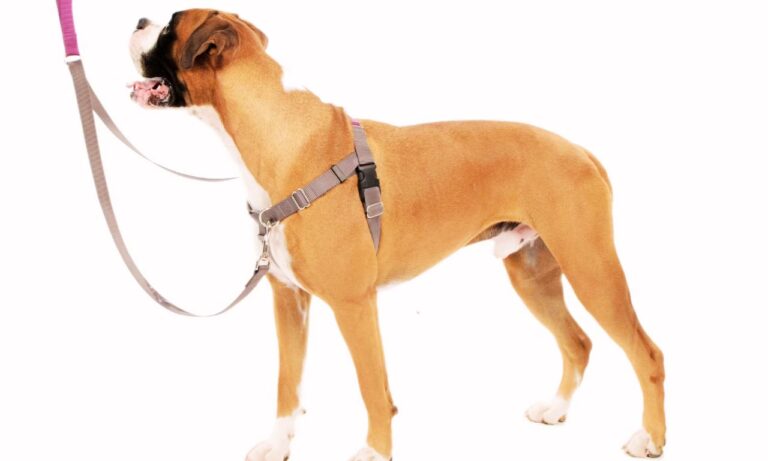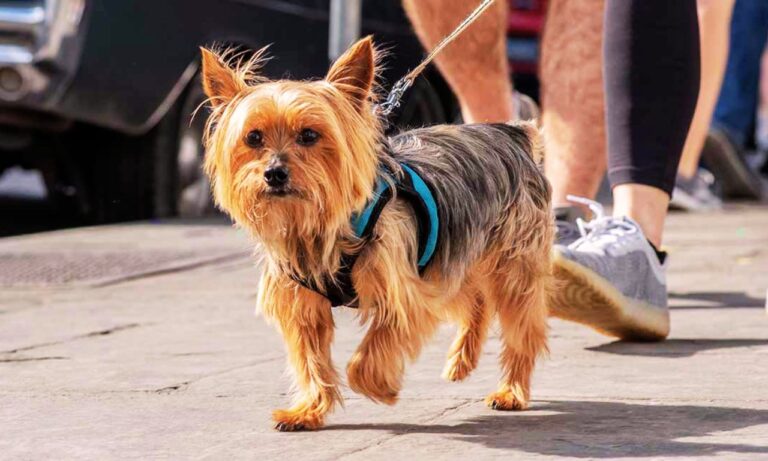The decision to leave a dog’s collar on all the time involves weighing the benefits of safety and identification against potential risks to the dog’s health and comfort. In this blog, we’ll explore the pros and cons of leaving a collar on constantly and provide guidelines for when it may be best to remove it.
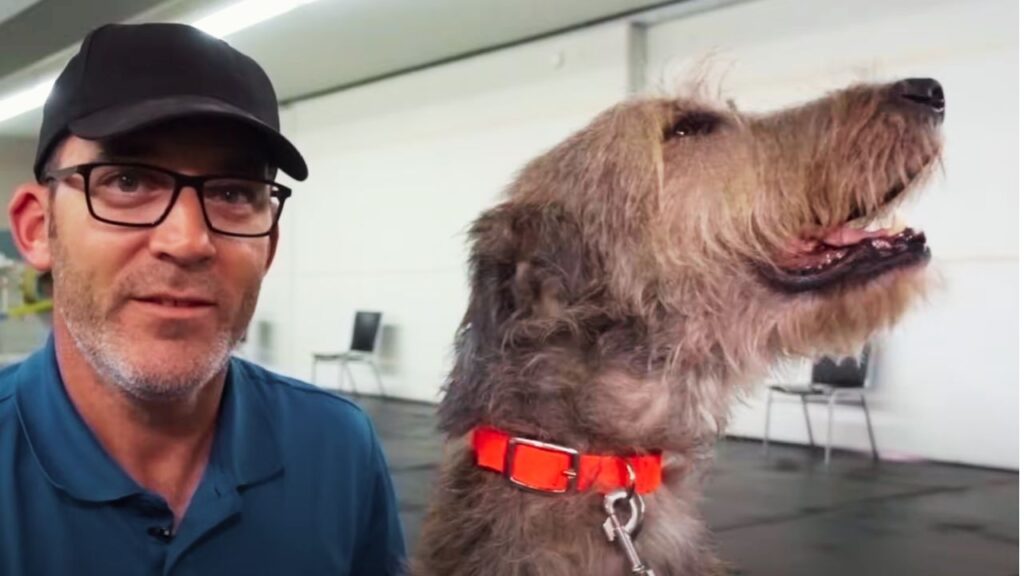
So, Is it bad to leave a dog’s collar on all the time? Learn the best practices for putting a collar on thick-skinned dogs to ensure a comfortable and irritation-free fit.
Blog Highlights
ToggleIs It Bad to Leave a Dog’s Collar on All the Time?
So, Is it bad to leave a dog’s collar on all the time? Leaving a dog’s collar on all the time can cause skin irritation, hair loss, and choking hazards, especially during play or sleep. However, it provides quick identification and safety in case of escape. Regularly checking the fit, using soft materials, and removing the collar at night can minimize risks. For detailed insights on whether collars can harm a dog’s neck and fur, check out this article on Pawsitive Gears: Are Collars Bad for a Dog’s Neck and Fur?
Here’s a quick overview:
Benefits of Leaving a Collar on All the Time
Leaving a dog’s collar on all the time offers benefits like quick identification, safety in case of escape, and convenience.
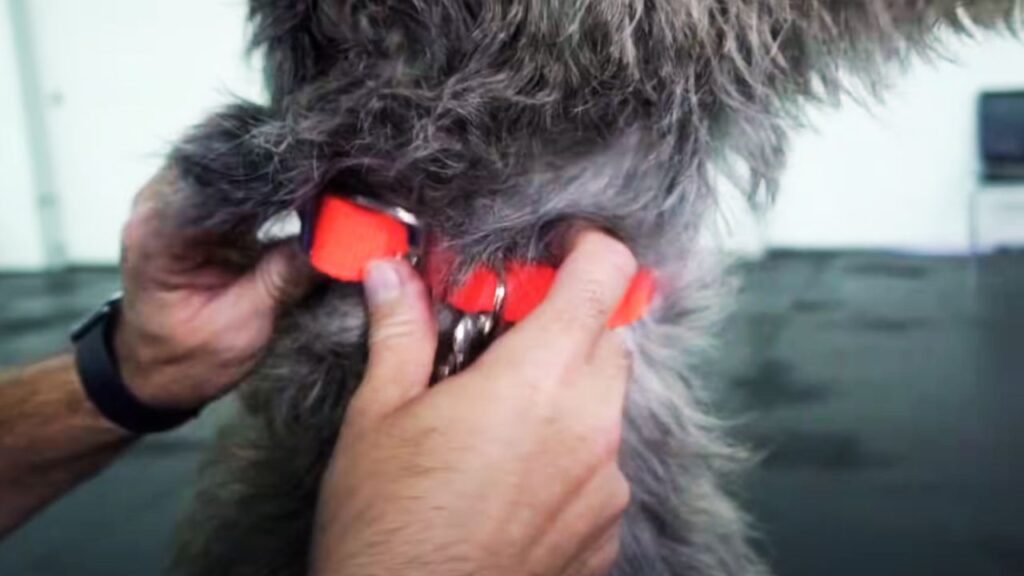
1. Identification and Safety
One of the main reasons many pet owners choose to keep their dog’s collar on 24/7 is for identification purposes. According to statistics, over 10 million pets are lost each year in the U.S., and without proper ID, many are never returned to their owners. In fact, only about 15% of dogs and 2% of cats without identification are reunited with their families after entering a shelter. Collars with ID tags ensure that anyone who finds a lost dog can quickly contact the owner.
For dogs that tend to escape or live in areas where it’s common for pets to run off, leaving the collar on at all times can provide peace of mind. Many urban areas also have regulations requiring dogs to wear identification tags, which makes constant collar use more practical when moving around outdoors.
2. Collar-Free Alternatives Are Limited
While microchipping is an excellent alternative for identification, it doesn’t completely replace the need for a collar. Microchips can only be read with special scanners, typically available at shelters or veterinary clinics, which might not help if a stranger finds your pet. Collars and ID tags provide an immediate way to contact owners. Understand if the Cane Corso is a high-maintenance dog with this insightful guide.
Risks of Constant Collar Use
Leaving a collar on constantly can lead to skin irritation, hair loss, choking hazards, and discomfort, especially during sleep or play.
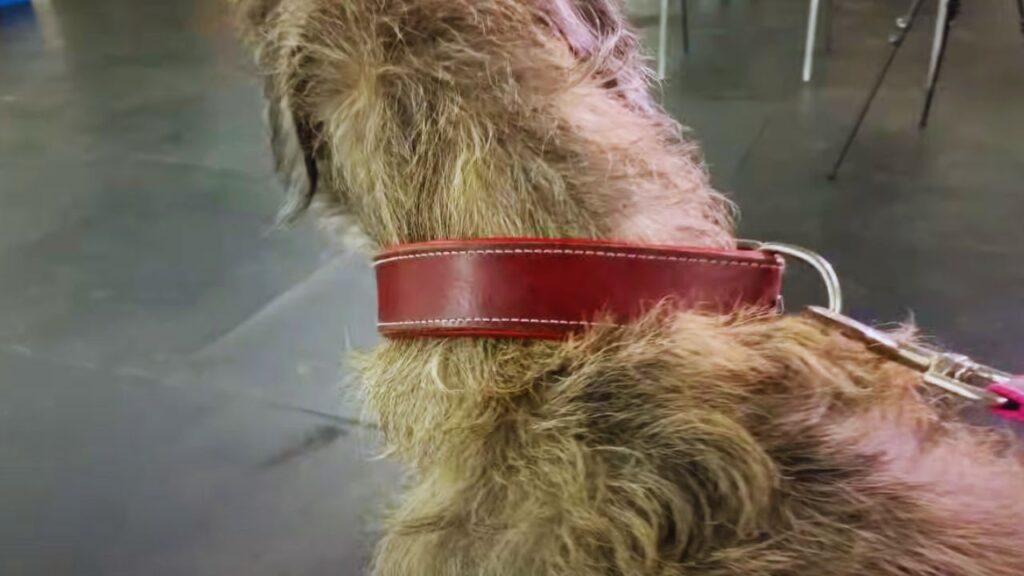
1. Skin Irritation and Hair Loss
One of the biggest concerns about leaving a collar on all the time is the potential for skin irritation. Collars that are worn constantly can rub against a dog’s neck, leading to chafing, hair loss, and even sores. This is particularly common if the collar is too tight or made from materials that irritate the skin. Long-haired dogs are also prone to matting or fur discoloration beneath the collar.
To avoid these issues, it’s important to regularly inspect your dog’s neck for any signs of irritation and ensure the collar fits properly. A collar should allow for two fingers to fit between the dog’s neck and the collar to prevent it from being too tight.
2. Choking and Strangulation Hazards
Leaving a collar on all the time increases the risk of it getting caught on objects such as furniture, fences, or even other dogs during play. This can lead to choking or, in extreme cases, strangulation. Some experts recommend using breakaway collars, which are designed to release when significant pressure is applied, to minimize this risk.
Dogs that are left alone or placed in crates or kennels should ideally have their collars removed to prevent accidents. In fact, many dog care facilities and groomers remove collars for this very reason. Explore the Cane Corso growth and weight chart and nutrition plans.
3. Discomfort During Sleep
Many owners find that their dogs are more comfortable sleeping without a collar. Collars can dig into the neck while lying down, especially if the dog shifts position throughout the night. Removing the collar at bedtime allows the skin to breathe and prevents irritation.
When to Remove a Dog’s Collar
While there are legitimate reasons to leave a collar on in certain situations, there are also times when it’s beneficial to remove it:
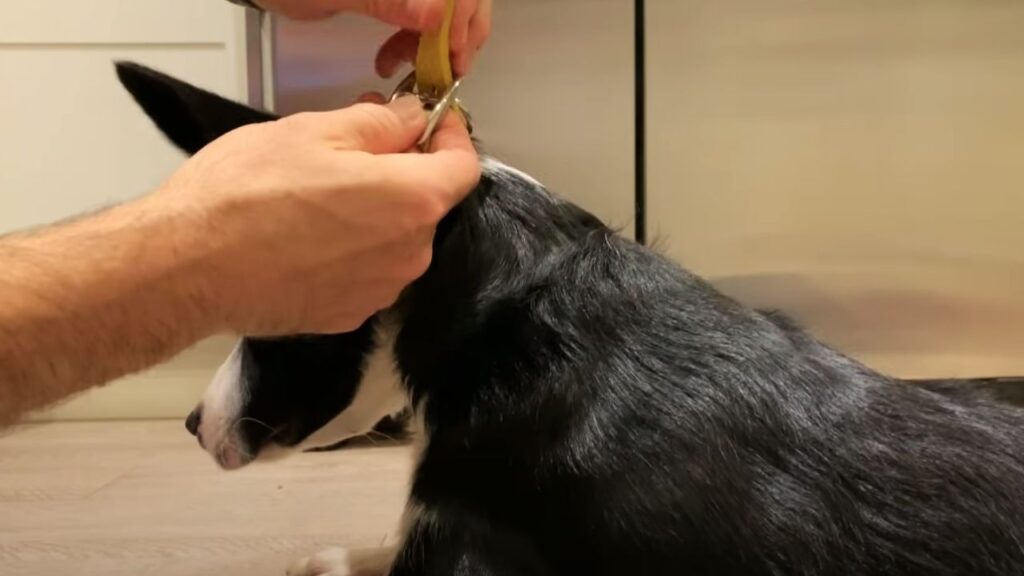
- At Night: Removing the collar while your dog sleeps gives them a break from the constant pressure around their neck and can help prevent discomfort or skin irritation. Making this a part of their bedtime routine can also help them become more relaxed about collar handling.
- During Play or Exercise: If your dog is in a safe, enclosed area, removing the collar during play can reduce the risk of accidents. Collars can get caught on toys, branches, or even another dog’s teeth, leading to injury.
- In a Crate: Dogs should not wear collars when confined to a crate or kennel to avoid the risk of the collar getting caught on the bars. Breakaway collars are a safer alternative if you feel the need for your dog to wear something in a crate.
Alternatives to Constant Collar Use
If you’re concerned about the risks of leaving a collar on all the time, there are alternatives to ensure your dog is both safe and comfortable:

- Harnesses: Harnesses provide a safer option for dogs that tend to pull on the leash during walks. They distribute pressure across the body instead of the neck, which helps prevent strain on the throat and reduces the risk of injury.
- Microchipping: Microchips are a permanent form of identification that doesn’t require a collar. Although they don’t replace the need for a visible ID tag, microchips offer a backup in case your dog loses its collar.
- Breakaway Collars: For active dogs, breakaway collars are a safer option. These collars are designed to break open if they become snagged, preventing choking or strangulation. However, the downside is that your dog’s identification will come off with the collar if it breaks away.
Best Practices for Safe and Comfortable Collar Use
Now that we’ve explored the pros and cons of leaving a collar on your dog all the time, it’s important to establish some best practices that ensure your dog’s safety and comfort while wearing a collar. Whether you choose to keep the collar on all day or remove it periodically, these guidelines will help you make an informed decision and keep your dog happy and healthy. Find out the best collars for Cane Corsos to suit their unique needs.
1. Regularly Check and Adjust the Fit
The fit of your dog’s collar is critical to preventing discomfort and injuries. A well-fitted collar should be snug but not tight, allowing enough room for two fingers to slide between the collar and the dog’s neck.
If the collar is too tight, it can restrict airflow, cause skin irritation, or even lead to choking hazards. On the other hand, a collar that is too loose can slip off, potentially causing your dog to get lost or get its paw, leg, or jaw caught in the collar, leading to injuries.
For puppies, regular adjustments are crucial as they grow rapidly during the first year of life. If the collar is not adjusted properly, it can become too tight, risking long-term health issues. Make it a habit to check the fit every couple of weeks, especially for growing dogs.
2. Choose the Right Collar Material
The material of your dog’s collar plays a significant role in ensuring comfort and preventing skin irritation. Dogs with sensitive skin or long hair are particularly prone to irritation and matting when wearing collars made from rough or unsuitable materials. Nylon and leather collars are common, but their suitability can vary depending on your dog’s specific needs.
- Nylon Collars: These are durable, lightweight, and affordable, making them a popular choice for daily wear. However, some dogs may develop skin irritation from nylon, especially if the collar gets wet and rubs against the skin.
- Leather Collars: Leather collars tend to be softer and more comfortable, especially for dogs with sensitive skin. They are also more durable and can last longer than nylon collars. Rolled leather collars, in particular, are excellent for dogs with long hair, as they reduce the chances of hair matting or tangling.
- Hypoallergenic Options: For dogs with extreme sensitivity or allergies, collars made from hypoallergenic materials such as hemp or specialized fabrics can help prevent irritation.
3. Rotate Collars to Prevent Irritation
To avoid constant pressure on the same area of your dog’s neck, it’s a good idea to rotate between different collars or give your dog regular breaks from wearing one. By switching collars every few days or removing them during certain times (such as at night or during play), you can prevent the collar from causing hair loss or skin irritation from prolonged contact. Learn how to put a collar on a Husky with these practical tips.
4. Remove Collars at Night for Comfort
While leaving a collar on during the day can offer security, taking it off at night allows your dog to sleep more comfortably. Removing the collar at bedtime gives your dog’s skin a chance to breathe, preventing irritation and allowing the fur to recover from the pressure of the collar. Additionally, without the collar, there’s no risk of it getting caught on bedding or furniture, which could lead to injury while your dog is unsupervised.
Establishing a routine of removing the collar at night can also help your dog become more accustomed to handling. Many dogs show excitement when their collar is removed, associating it with comfort and relaxation. Including a command and reward system when removing and replacing the collar can make the process easier for both the dog and the owner.
5. Be Cautious During Play and Exercise
Collars can become hazardous during vigorous play or exercise, especially if your dog is interacting with other dogs or playing in areas with obstacles. In such situations, collars can easily snag on objects or other dogs’ teeth, leading to accidents. If your dog is in a secure, enclosed area, it may be best to remove the collar during play to prevent these risks.
However, when outside in public spaces or unsecured areas, keeping the collar on is essential for both identification and leash attachment. In these cases, you can opt for breakaway collars, which are designed to release if snagged, thus reducing the risk of strangulation.
Wrapping Up!
While there are practical reasons to keep a collar on your dog at all times, it’s essential to consider the potential risks. Skin irritation, choking hazards, and general discomfort are valid concerns. To strike a balance between safety and comfort, it’s best to remove your dog’s collar at night or during certain activities. Hope so, now you know Is it bad to leave a dog’s collar on all the time. Discover the best collars for Siberian Huskies for both style and comfort.


